 "ttyymmnn" (ttyymmnn)
"ttyymmnn" (ttyymmnn)
12/13/2019 at 12:35 • Filed to: wingspan, Planelopnik, TDIAH
 6
6
 25
25
 "ttyymmnn" (ttyymmnn)
"ttyymmnn" (ttyymmnn)
12/13/2019 at 12:35 • Filed to: wingspan, Planelopnik, TDIAH |  6 6
|  25 25 |
!!! UNKNOWN CONTENT TYPE !!!
Welcome to
This Date in Aviation History
, getting of you caught up on milestones, important historical events and people in aviation from December 11 through December 13.
!!! UNKNOWN CONTENT TYPE !!!
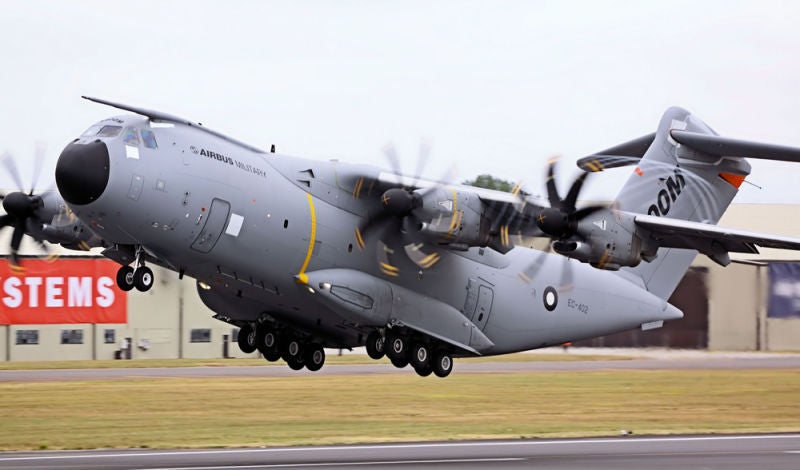 !!!CAPTION ERROR: MAY BE MULTI-LINE OR CONTAIN LINK!!!
!!!CAPTION ERROR: MAY BE MULTI-LINE OR CONTAIN LINK!!!
December 11, 2009 – The first flight of the Airbus A400M Atlas.
Ever since the
!!!error: Indecipherable SUB-paragraph formatting!!!
took its first flight in 1954, it has been the reigning king of tactical airlift, a remarkable workhorse of an aircraft that has been continuously produced for over 60 years. The Hercules can be found in service with at least 70 countries worldwide, but that remarkable record of success didn’t stop aircraft designers from trying to find a replacement for the venerable Herk.
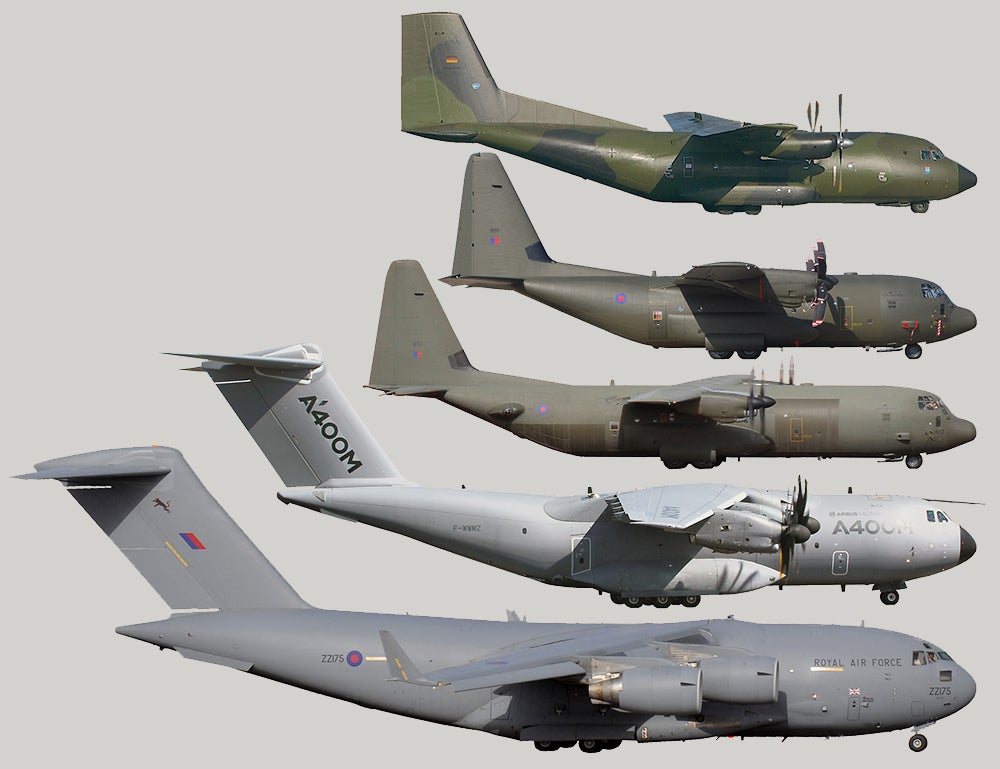 !!!CAPTION ERROR: MAY BE MULTI-LINE OR CONTAIN LINK!!!
!!!CAPTION ERROR: MAY BE MULTI-LINE OR CONTAIN LINK!!!
Development of the A400M began in 1982 when Aérospatiale, British Aerospace, Lockheed, and Messerschmitt-Bölkow-Blohm formed a consortium to develop what was called the Future International Airlifter to replace the Hercules, as well as the smaller, twin-engine the !!!error: Indecipherable SUB-paragraph formatting!!! . The new tactical airlifter was planned to fit somewhere in between the C-130 and the much larger !!!error: Indecipherable SUB-paragraph formatting!!! strategic airlifter, with the idea being to create an aircraft that could carry a heavier load than the C-130 while still operating from airstrips that cannot be used by the C-17. International politics being what they are, and with competing interests in the requirements of the new aircraft, Lockheed eventually left the group to develop the upgraded !!!error: Indecipherable SUB-paragraph formatting!!! . Other European nations came and went, and the remaining countries were organized under the banner of !!!error: Indecipherable SUB-paragraph formatting!!! .
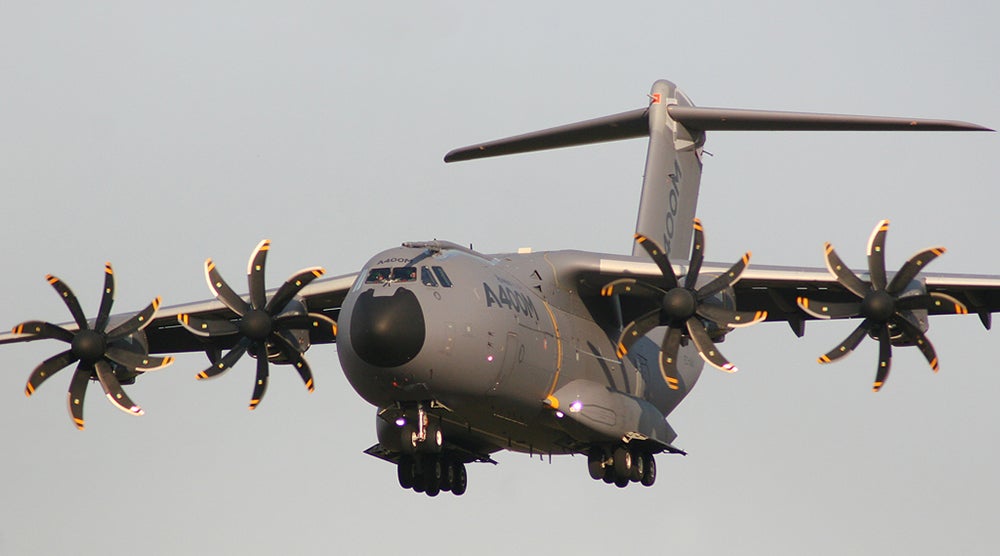 !!!CAPTION ERROR: MAY BE MULTI-LINE OR CONTAIN LINK!!!
!!!CAPTION ERROR: MAY BE MULTI-LINE OR CONTAIN LINK!!!
One of the first problems Airbus Military faced was the lack of an existing turboprop engine that could provide the required performance. After making a request for proposals, Pratt & Whitney Canada responded with their !!!error: Indecipherable SUB-paragraph formatting!!! , while Europrop International offered their !!!error: Indecipherable SUB-paragraph formatting!!! . Following still more European political intrigue, the Europrop engine was selected. The TP400 produces 11,000 hp and the quartet of engines on the A400M provides a maximum speed of 513 mph, with a cruising speed of 485 mph. To compensate for inherent control problems caused by engine torque, the A400M features !!!error: Indecipherable SUB-paragraph formatting!!! , but the opposite rotation direction is not derived by making engines that turn in different directions. Rather, all the engines turn in the same direction, and a gearbox is used to reverse the rotation direction of the propeller for one engine on each wing. The inner engines rotate outwards, while the outer engines rotate inwards. Having all the engines turn the same direction allows for commonality among the engines, which simplifies maintenance and reduces cost. Airbus Military states that the Atlas has a range of over 5,000 miles at an altitude of 37,000 feet with a maximum payload of 81,000 pounds, or nearly twice that of the C-130J. It also features autonomous cargo loading and unloading which allows cargo transfer to be carried out by a single loadmaster.
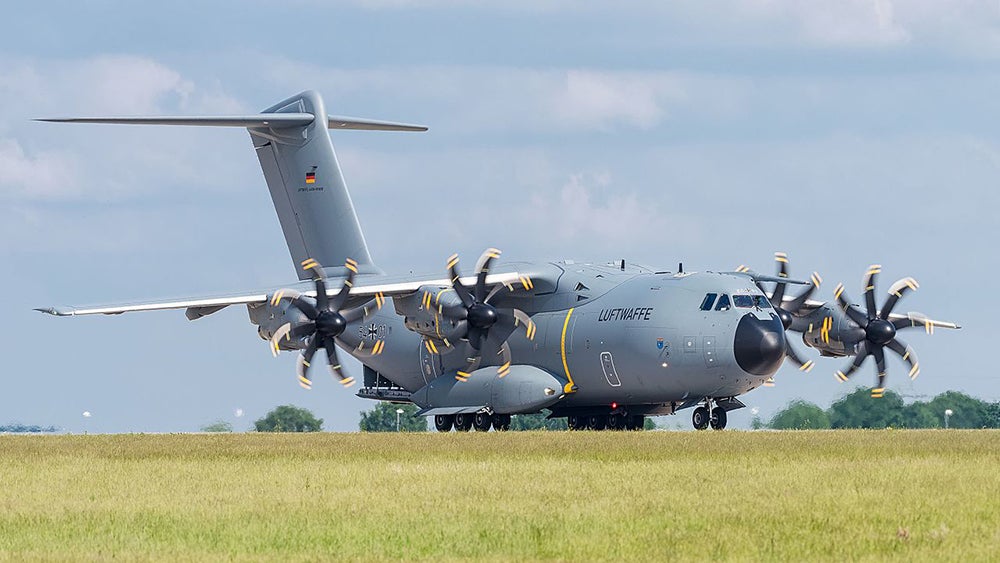 !!!CAPTION ERROR: MAY BE MULTI-LINE OR CONTAIN LINK!!!
!!!CAPTION ERROR: MAY BE MULTI-LINE OR CONTAIN LINK!!!
As with any new, complex aircraft, delays pushed delivery dates farther and farther back, with initial deployment deferred from 2009 to 2012. The A400M suffered its first fatal accident in May 2015 when engine mapping software was inadvertently erased and the engines failed to provide power during takeoff. Four employees of Spanish Airbus were killed, and two were seriously injured. The French Air Force completed the first operational mission of the A400M in December of 2013 in support of !!!error: Indecipherable SUB-paragraph formatting!!! in Mali, and the British made their first operational flight in 2015. The German Luftwaffe carried out the first transport mission to an active war zone in Afghanistan in 2018. A total of 174 aircraft have been ordered so far, with 56 deliveries completed as of January 2018.
!!! UNKNOWN CONTENT TYPE !!!
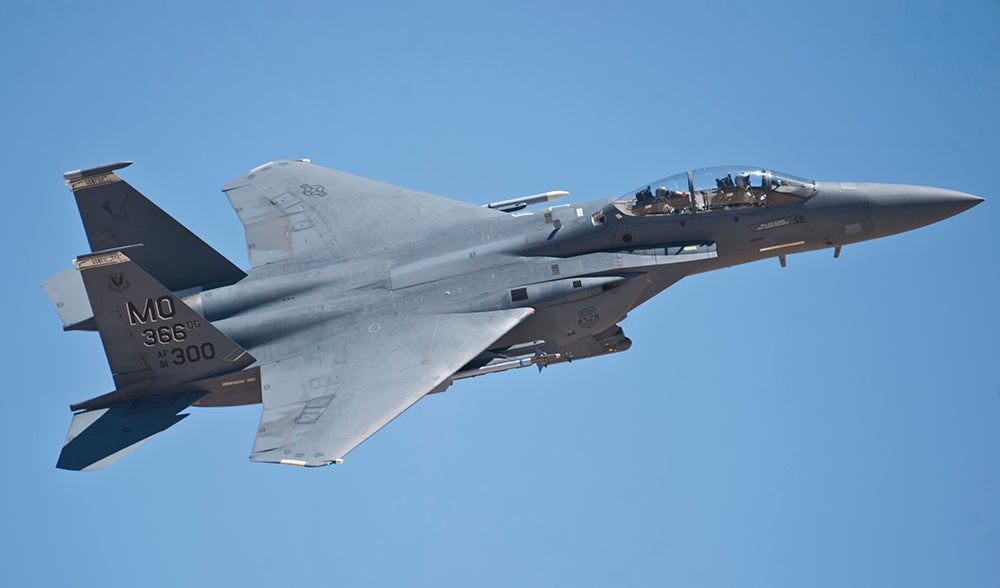
An F-15E Strike Eagle assigned to Mountain Home Air Force Base, Idaho flies during a Red Flag 15-3 sortie at Nellis Air Force Base, Nevada in 2015 (US Air Force)
December 11, 1986 – The first flight of the McDonnell Douglas F-15E Strike Eagle.
In the late 1960s, the US Air Force began looking for a new fighter to replace the
!!!error: Indecipherable SUB-paragraph formatting!!!
, a search which ended with the superb
!!!error: Indecipherable SUB-paragraph formatting!!!
. The Eagle was designed from the outset as an air superiority fighter, one that could take and hold command of the airspace over the battlefield. But the Air Force made sure that the Eagle was strictly an air-to-air platform, and the F-15 Special Projects Office vehemently opposed the idea of the Eagle directly supporting troops on the ground, or taking part in air-to-ground missions, saying, “Not a pound for air to ground.” After all, the
!!!error: Indecipherable SUB-paragraph formatting!!!
, arguably one of the greatest ground attack aircraft ever produced, was getting ready to join the Air Force, and took its maiden flight in 1972 along with the Eagle. But in spite of no official support for a ground attack version of the Eagle, McDonnell Douglas worked quietly on an advanced, multi-role version of the Eagle in the hopes that opinions in the Air Force might one day change.
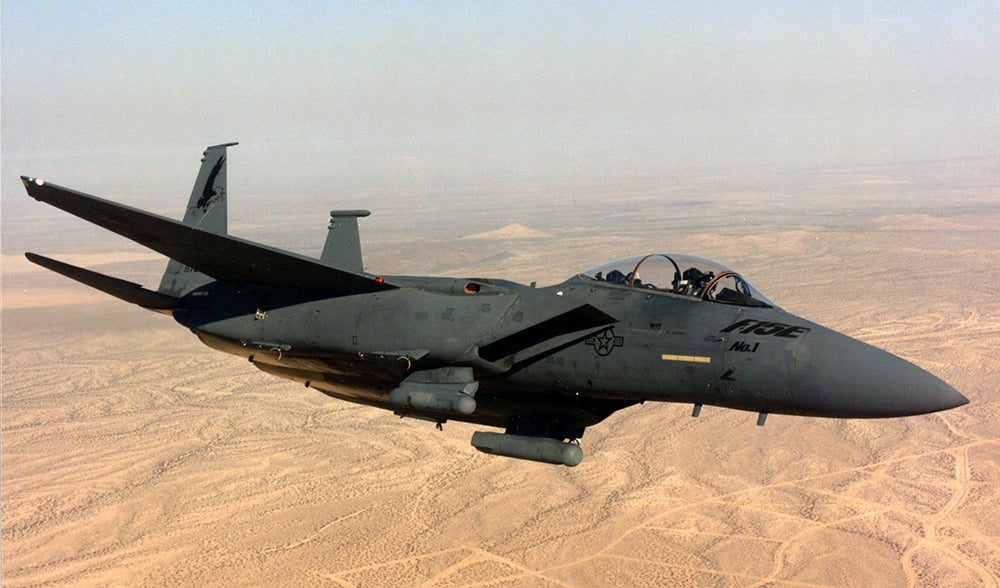
The first production F-15E Strike Eagle (US Air Force)
In 1981, the Air Force announced the Enhanced Tactical Fighter program to find a replacement for the !!!error: Indecipherable SUB-paragraph formatting!!! . The goal was to develop an aircraft that could strike deep into enemy territory without requiring fighter escort and without electronic jamming provided by additional aircraft. Thus, it would also need the ability to defend itself from aerial attack. General Dynamics responded with the !!!error: Indecipherable SUB-paragraph formatting!!! , a !!!error: Indecipherable SUB-paragraph formatting!!! wing version of their successful !!!error: Indecipherable SUB-paragraph formatting!!! , and McDonnell Douglas submitted the F-15E they had been working on. After a two-year evaluation, the Air Force selected the F-15E, which proved to be capable of takeoff weights in excess of 75,000 pounds and had the ability to operate with 16 different weapon configurations. Other factors in the Air Force’s decision were the reduced development costs from its commonality to the original F-15 fighter, future growth potential, and the added safety of two engines.
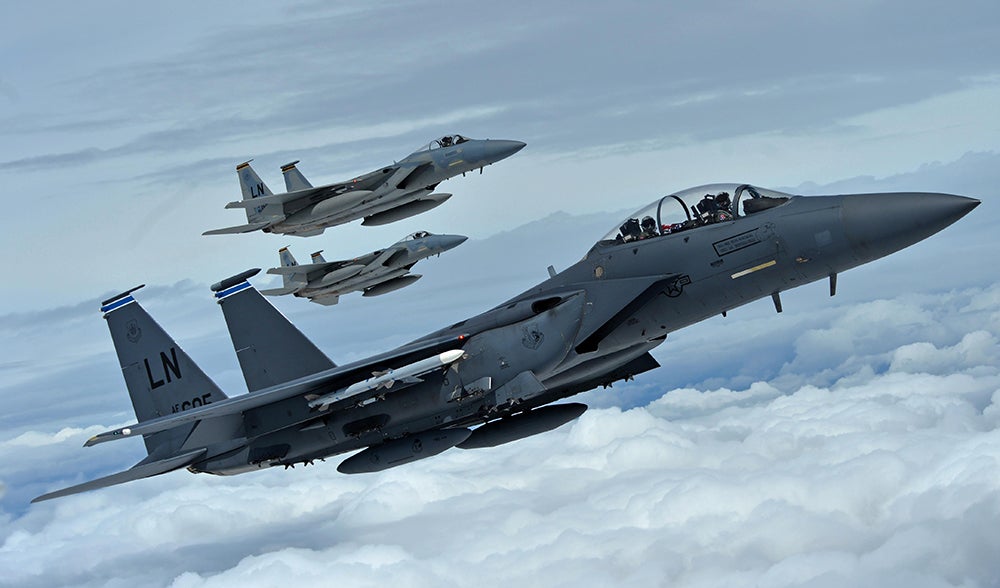
An F-15E Strike Eagle assigned to the 492nd Fighter Squadron flies in formation with a pair of single-seat F-15C Eagles of the 493rd Fighter Squadron over Gloucestershire, England in 2016 (US Air Force)
The F-15E is very similar in appearance to the original F-15, but the most apparent difference is the addition of a second seat for the !!!error: Indecipherable SUB-paragraph formatting!!! (WSO) and a darker camouflage pattern. The fuselage was redesigned and strengthened to accept more powerful !!!error: Indecipherable SUB-paragraph formatting!!! afterburning turbofan engines, and !!!error: Indecipherable SUB-paragraph formatting!!! were later added to the sides of the fuselage to extend range. And, unlike other two-seat aircraft with a WSO, such as the !!!error: Indecipherable SUB-paragraph formatting!!! , the rear seat has controls to fly the plane if necessary.
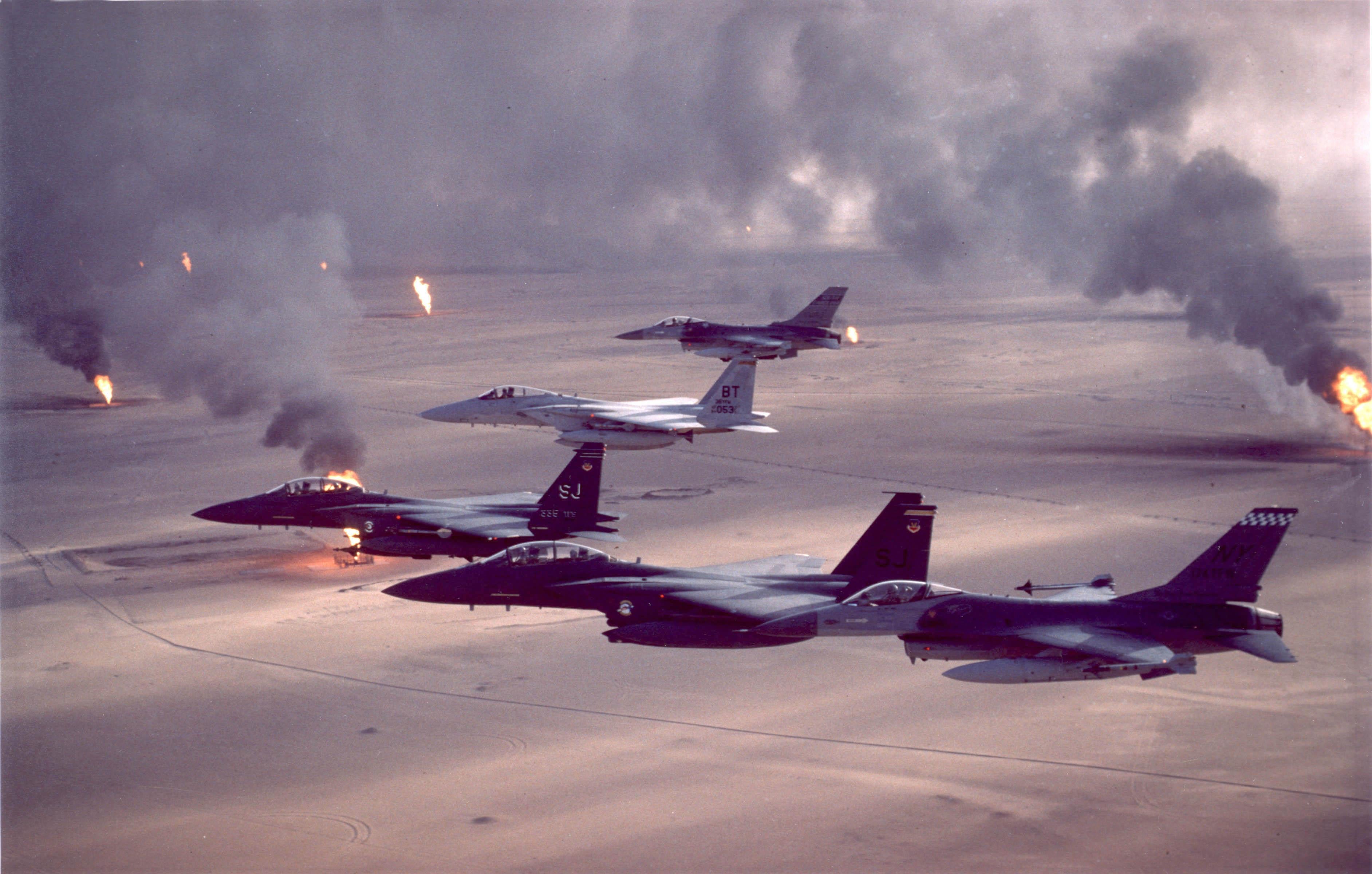
Two F-15E Strike Eagles fly with a pair of F-16A Fighting Falcons and a lighter-colored F-15C Eagle over burning Kuwaiti oil fields during Operation Desert Storm in 1991 (US Air Force)
The Strike Eagle was introduced in 1988, and soon saw action in the skies over Iraq and Kuwait in !!!error: Indecipherable SUB-paragraph formatting!!! , and has gone on to fight in all major operations since. In addition to its US Air Force service, variants of the Strike Eagle figure prominently in the air forces of Israel, Singapore, Qatar, and South Korea, while Saudi Arabia is the largest export customer, with 70 aircraft in service and an additional 84 on order. It is also rumored that Boeing is working on a so-called F-15X, an upgraded version that would likely contain no stealth features, but would instead focus on avionics and battlefield integration similar to the latest US Air Force fighters such as the !!!error: Indecipherable SUB-paragraph formatting!!! and !!!error: Indecipherable SUB-paragraph formatting!!! . The F-15X is also !!!error: Indecipherable SUB-paragraph formatting!!! to support a payload of up to 22 missiles.
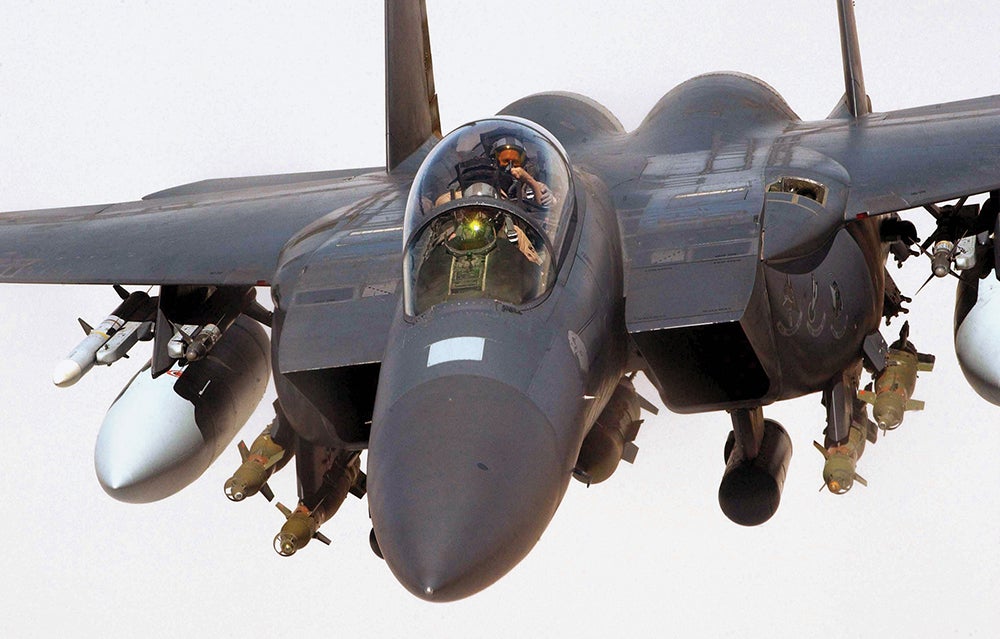
A US Air Force F-15E Strike Eagle from the 494th Fighter Squadron on a combat sortie in support of Operation Iraqi Freedom. The large weapons load includes two AIM-120 and two AIM-9 air-to-air missiles, four GBU-12 laser-guided bombs, and a single centerline mounted GBU-31 Joint Direct Attack Munition (JDAM). This aircraft is also fitted with conformal fuel tanks along the side of the fuselage outboard from the air intakes. (US Air Force)
!!! UNKNOWN CONTENT TYPE !!!
Short Takeoff
!!! UNKNOWN CONTENT TYPE !!!
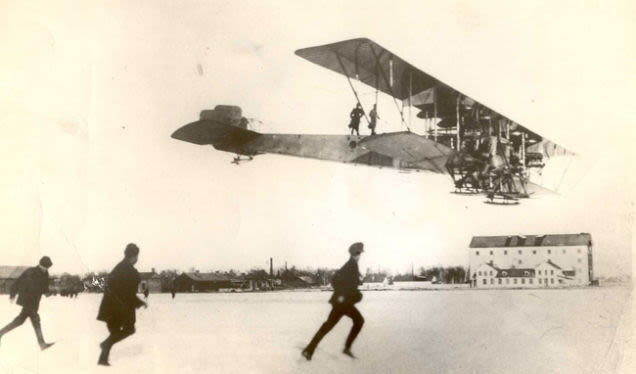
(Author unknown)
December 11, 1913 – The first flight of the Sikorsky Ilya Muromets , a large, four-engine bomber designed by !!!error: Indecipherable SUB-paragraph formatting!!! and developed from the earlier !!!error: Indecipherable SUB-paragraph formatting!!! . Named after the !!!error: Indecipherable SUB-paragraph formatting!!! from Russian mythology, the Ilya Muromets was originally intended as a large passenger aircraft, but was then developed into a bomber as WWI approached. They were the first aircraft in aviation history to perform heavy bombing missions, group raids, night bombings and photo reconnaissance. In 400 sorties, the Ilya Muromets dropped sixty-five tons of bombs. Following the war, the Muromets returned to its original role of passenger aircraft and mail plane, with the final flight taking place in 1922. Approximately 85 were produced from 1913-1917.
!!! UNKNOWN CONTENT TYPE !!!
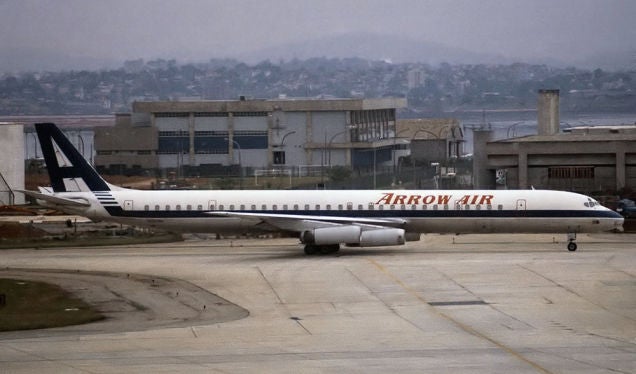
(Pedro Aragão )
December 12, 1985 – The crash of Arrow Air Flight 1285, a chartered !!!error: Indecipherable SUB-paragraph formatting!!! (N950JW) that was carrying eight crew members and 248 soldiers of the US Army !!!error: Indecipherable SUB-paragraph formatting!!! returning to Fort Campbell, Kentucky after serving in a peacekeeping mission in the Sinai Peninsula. On the final leg of the flight, the DC-8 crashed shortly after takeoff from Gander, Newfoundland, killing all on board. The investigation concluded that the crash was caused by the accumulation of ice on the wings, as well as incorrect weight calculations. However, some investigators dissented, saying that a fire or explosive device likely caused the crash. The accident remains the deadliest single peacetime loss of life in the history of the US Army and the worst crash on Canadian soil.
!!! UNKNOWN CONTENT TYPE !!!
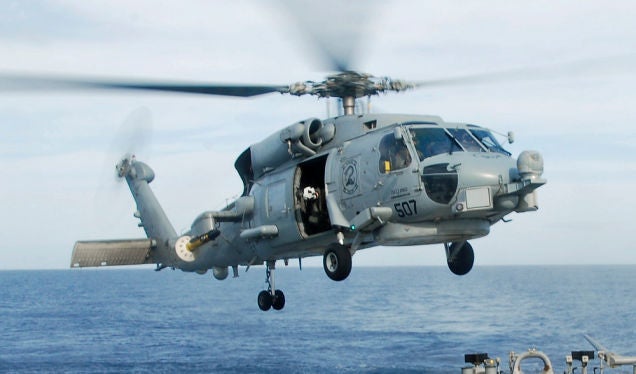
(US Navy)
December 12, 1979 – The first flight of the Sikorsky SH-60B Seahawk, a navalized variant of the !!!error: Indecipherable SUB-paragraph formatting!!! utility helicopter originally developed for the US Army. Also known as the Sea Hawk, the SH-60B was developed to replace the !!!error: Indecipherable SUB-paragraph formatting!!! , and it shares 83% commonality with its Army predecessor, with the most significant structural difference being a hinged tail for on-deck storage. The Seahawk also differs by the addition of !!!error: Indecipherable SUB-paragraph formatting!!! main gear struts, the shifting forward of the tail wheel, and a more powerful engine. Able to operate from any air-capable ship, the Seahawk is designed for anti-submarine warfare, anti-surface warfare, naval special warfare, search and rescue, vertical replenishment, and medical evacuation. Further variants have replaced the !!!error: Indecipherable SUB-paragraph formatting!!! and !!!error: Indecipherable SUB-paragraph formatting!!! .
!!! UNKNOWN CONTENT TYPE !!!
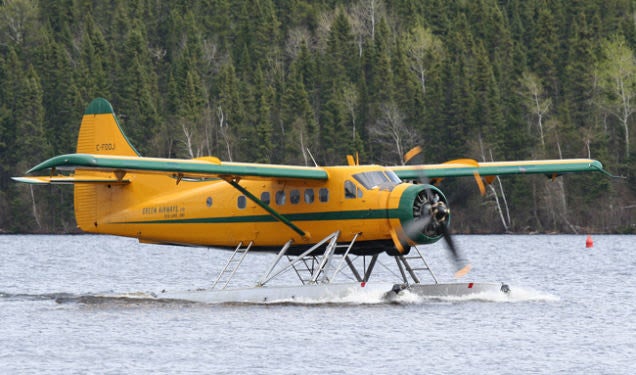 !!!CAPTION ERROR: MAY BE MULTI-LINE OR CONTAIN LINK!!!
!!!CAPTION ERROR: MAY BE MULTI-LINE OR CONTAIN LINK!!!
December 12, 1951 – The first flight of the de Havilland Canada DHC-3 Otter. With the !!!error: Indecipherable SUB-paragraph formatting!!! , de Havilland Canada had built a reputation for rugged aircraft that were capable of taking off from short or unimproved airstrips, and the DHC-3 Otter was designed to be a larger and more powerful aircraft that could perform the same mission. Originally called the King Beaver, the DHC-3 is longer and heavier than the DHC-2 and can seat 10-11 passengers. Originally fitted with a !!!error: Indecipherable SUB-paragraph formatting!!! !!!error: Indecipherable SUB-paragraph formatting!!! geared radial engine, some Otters have been upgraded with a turboprop engine and are known as the Turbo Otter. The Otter is capable of operating from land, from sea with floats, or from snow with skis, and 466 Otters were produced from 1951-1967.
!!! UNKNOWN CONTENT TYPE !!!
Connecting Flights
!!! UNKNOWN CONTENT TYPE !!!
!!! UNKNOWN CONTENT TYPE !!!
!!! UNKNOWN CONTENT TYPE !!!
!!! UNKNOWN CONTENT TYPE !!!
!!! UNKNOWN CONTENT TYPE !!!
If you enjoy these Aviation History posts, please let me know in the comments. And if you missed any of the past articles, you can find them all at
!!!error: Indecipherable SUB-paragraph formatting!!!
. You can also find more stories about aviation, aviators and airplane oddities at
!!!error: Indecipherable SUB-paragraph formatting!!!
.
!!! UNKNOWN CONTENT TYPE !!!
 Highlander-Datsuns are Forever
> ttyymmnn
Highlander-Datsuns are Forever
> ttyymmnn
12/13/2019 at 13:03 |
|
The F-15 is bad ass.
 HammerheadFistpunch
> ttyymmnn
HammerheadFistpunch
> ttyymmnn
12/13/2019 at 13:13 |
|
The 15 and 16 are forever going to be my favorite planes. both are so crazy versatile . I wonder why its not an F/A-15 like the 18 though?
 WilliamsSW
> ttyymmnn
WilliamsSW
> ttyymmnn
12/13/2019 at 13:20 |
|
That comparison of military transports is missing something big...
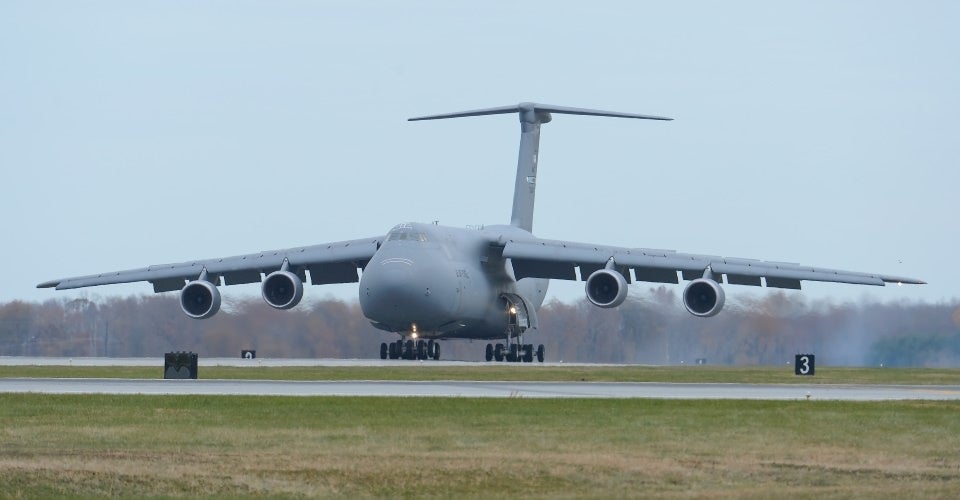
Probably wouldn’t fit in the picture I guess.
Great stuff as always, thanks!
 user314
> ttyymmnn
user314
> ttyymmnn
12/13/2019 at 13:25 |
|
Shoulda kept the original green/green/gray camo scheme on the F-15E.
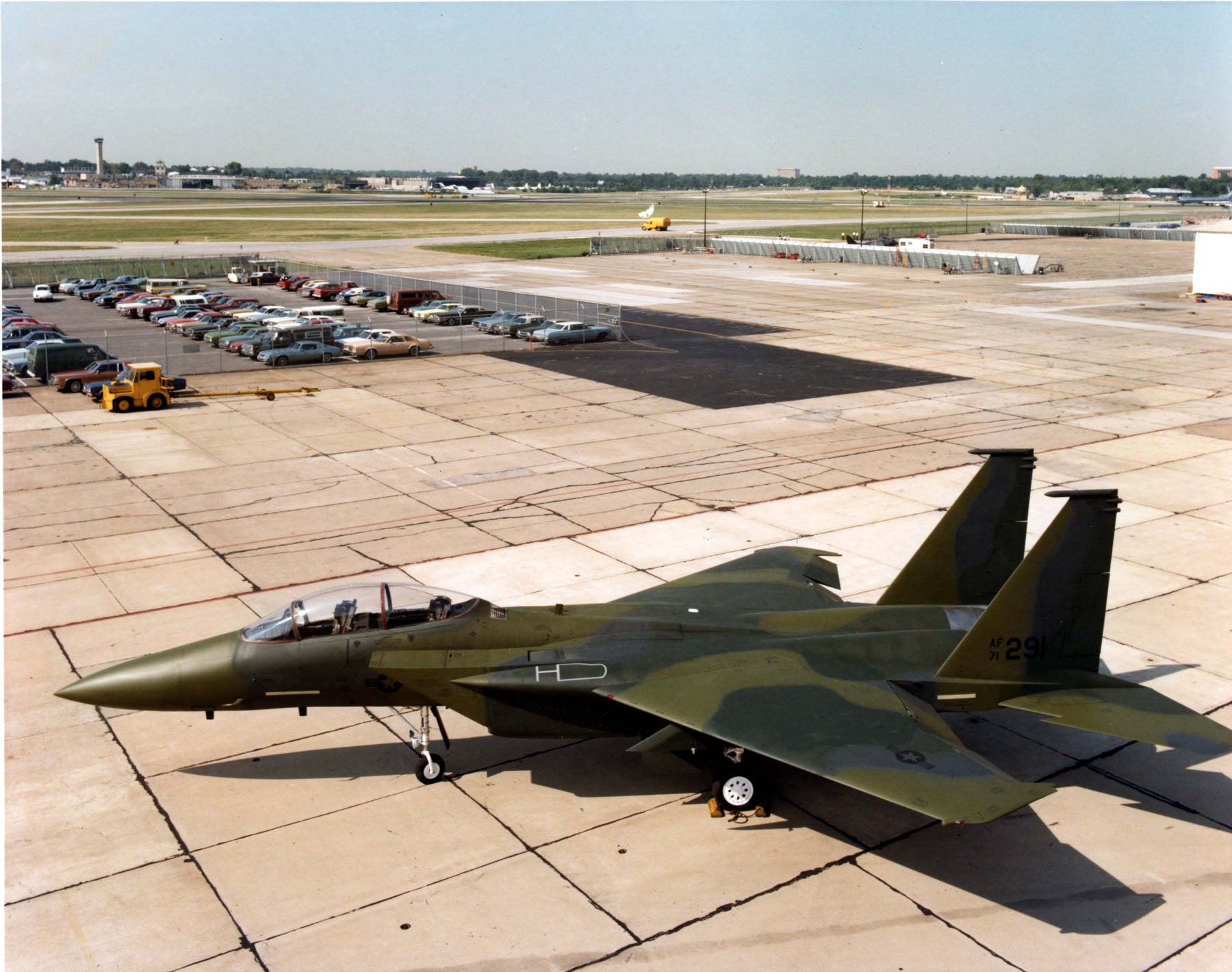
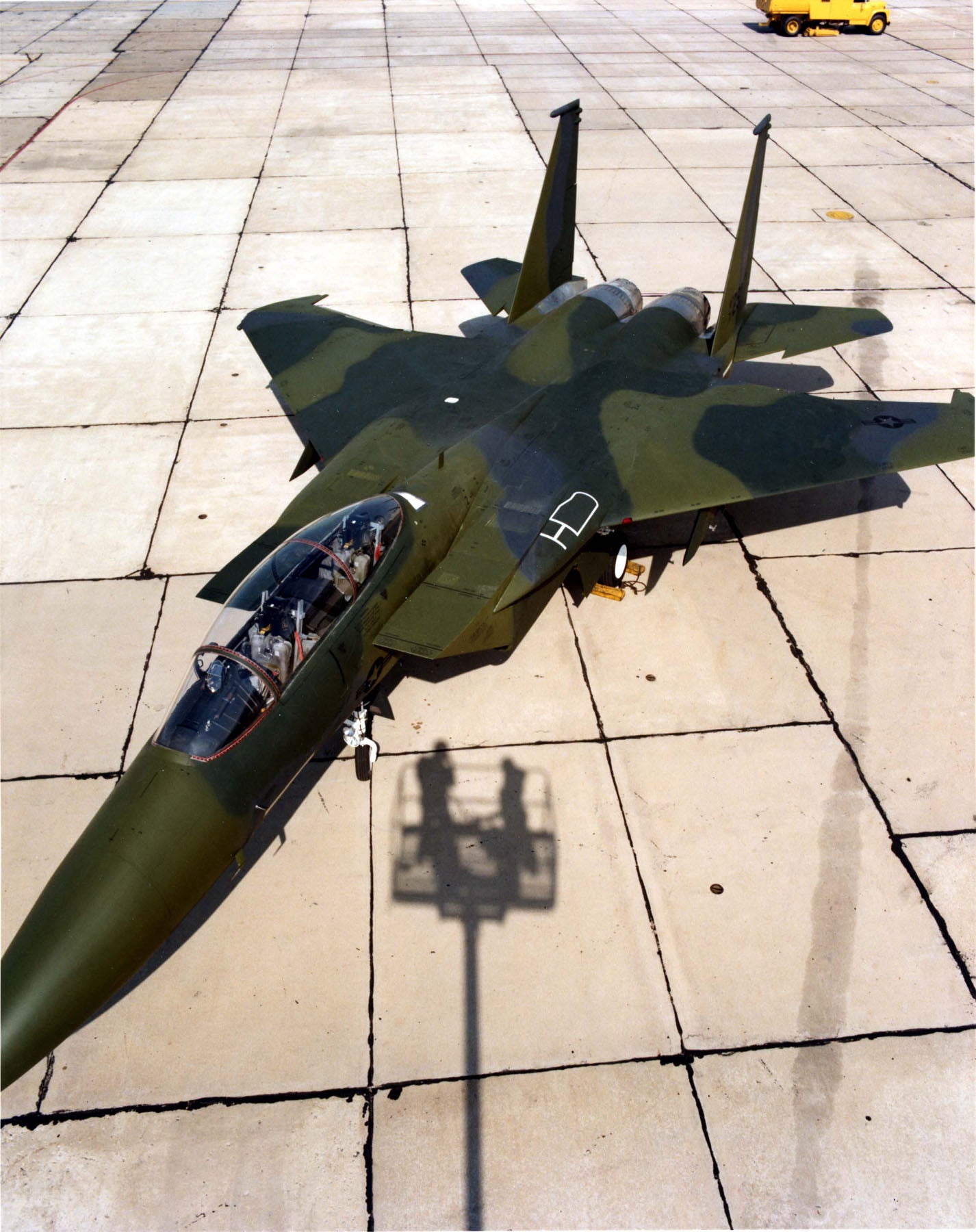
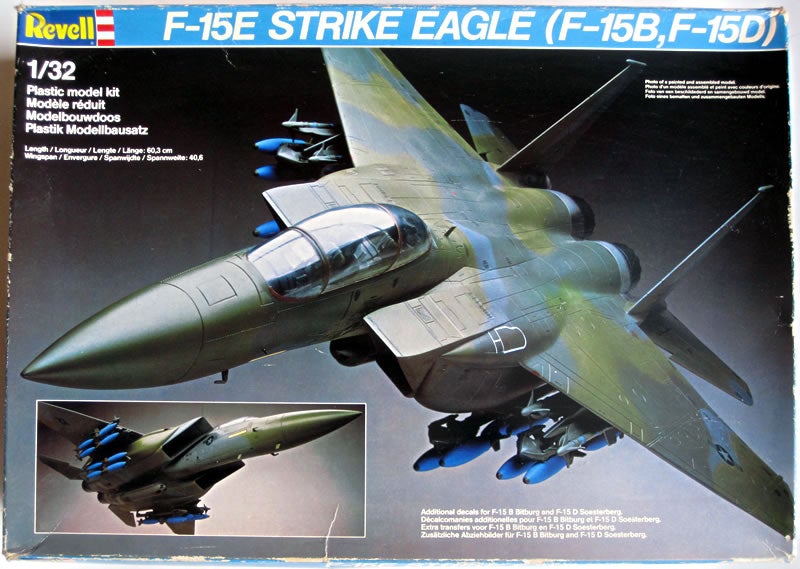
 user314
> HammerheadFistpunch
user314
> HammerheadFistpunch
12/13/2019 at 13:59 |
|
F/A is a Navy thing, since the Bug replaced both the F-4s and A-4, -6 and -7. The USAF doesn’t like the A designation (hell, they barely like the mission ), and has no problem calling erstwhile attack aircraft Fighters (F-111, F-117) or Bombers (B-57, B-66).
 ttyymmnn
> WilliamsSW
ttyymmnn
> WilliamsSW
12/13/2019 at 14:22 |
|
The C-5 is a strategic lifter, while the others are tactical. Though the C-17 could probably go both ways.
 ClassicDatsunDebate
> ttyymmnn
ClassicDatsunDebate
> ttyymmnn
12/13/2019 at 14:24 |
|
Hey Ttyymmnn, I always enjoy your TDiAH posts. Thanks for the effort!
 ttyymmnn
> ClassicDatsunDebate
ttyymmnn
> ClassicDatsunDebate
12/13/2019 at 14:32 |
|
You’re welcome! It’s my pleasure. Thanks for reading!
 user314
> ttyymmnn
user314
> ttyymmnn
12/13/2019 at 14:53 |
|

 WilliamsSW
> ttyymmnn
WilliamsSW
> ttyymmnn
12/13/2019 at 15:01 |
|
Ok but any excuse to post a Super Galaxy photo is a good one.
I walked through one at Oshkosh, it was amazing how big it is.
 ttyymmnn
> WilliamsSW
ttyymmnn
> WilliamsSW
12/13/2019 at 15:13 |
|
No excuse necessary! I, too, have walked through that cavernous beast. I was at an air show in San Antonio a few years ago, and a group of new AFROTC kids was taking their oath inside the a/c.
 ttyymmnn
> user314
ttyymmnn
> user314
12/13/2019 at 15:14 |
|
It’s amazing how clean and sleek that a/c looks without all the CFTs and extra stuff. What a hot rod. Love the camo.
 ttyymmnn
> HammerheadFistpunch
ttyymmnn
> HammerheadFistpunch
12/13/2019 at 15:18 |
|
Back when I was about 10 years old, so 1976, my friend and I argued over which was the better plane: the F-16 or F-14. I was in the Eagle camp. My response to him now would be: “Which one is still flying?” And not just the E, but the F-15C is still tearing up the skies, the last great gunfighter of its generation.
And like Skyfire said, I think the F/A thing is a Navy deal. Now I’m trying to think of the last USAF plane that had an A prefix. I’m not sure the A-26 counts, since it was much more of a bomber. The only one that comes to mind is the A-24 Banshee, which was the Army’s version of the Dauntless all the way back in WWII. The Army went from Pursuit to Fighter and never did much with the A’s. But I’m sure I’m missing something.
 ttyymmnn
> Highlander-Datsuns are Forever
ttyymmnn
> Highlander-Datsuns are Forever
12/13/2019 at 15:19 |
|
It is. The F-86 was my first favorite aircraft, but that got supplanted by the F-15. My friend and I used to argue which was better, the F-15 or the F-14. Both great planes in their own right, but with different missions. My answer to him now would be, “Which one is still flying?”
 Highlander-Datsuns are Forever
> ttyymmnn
Highlander-Datsuns are Forever
> ttyymmnn
12/13/2019 at 15:21 |
|
Every time I see an F-15 in person, I stop salute and say ‘Merica fuck yeah!
 user314
> ttyymmnn
user314
> ttyymmnn
12/13/2019 at 15:36 |
|
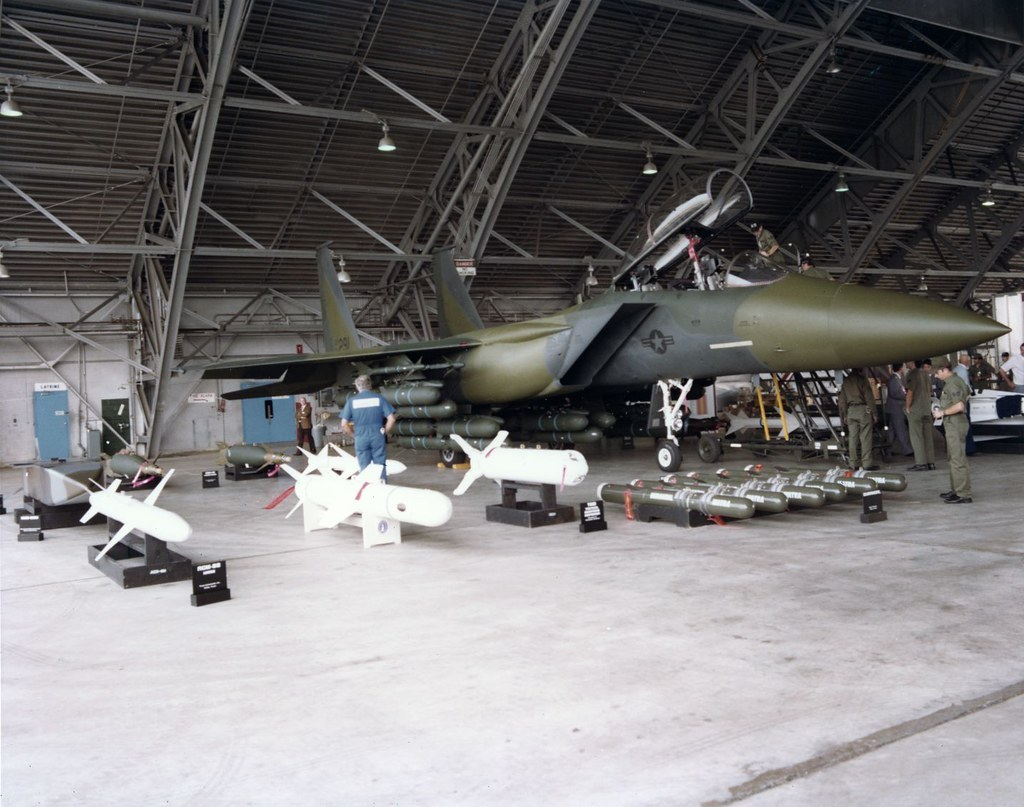
 You can tell a Finn but you can't tell him much
> user314
You can tell a Finn but you can't tell him much
> user314
12/13/2019 at 16:06 |
|
The F-117 got that designation as a bit of subterfuge to keep the Soviets from figuring out what it was for from what I remember.
 You can tell a Finn but you can't tell him much
> ttyymmnn
You can tell a Finn but you can't tell him much
> ttyymmnn
12/13/2019 at 16:09 |
|
*clears throat
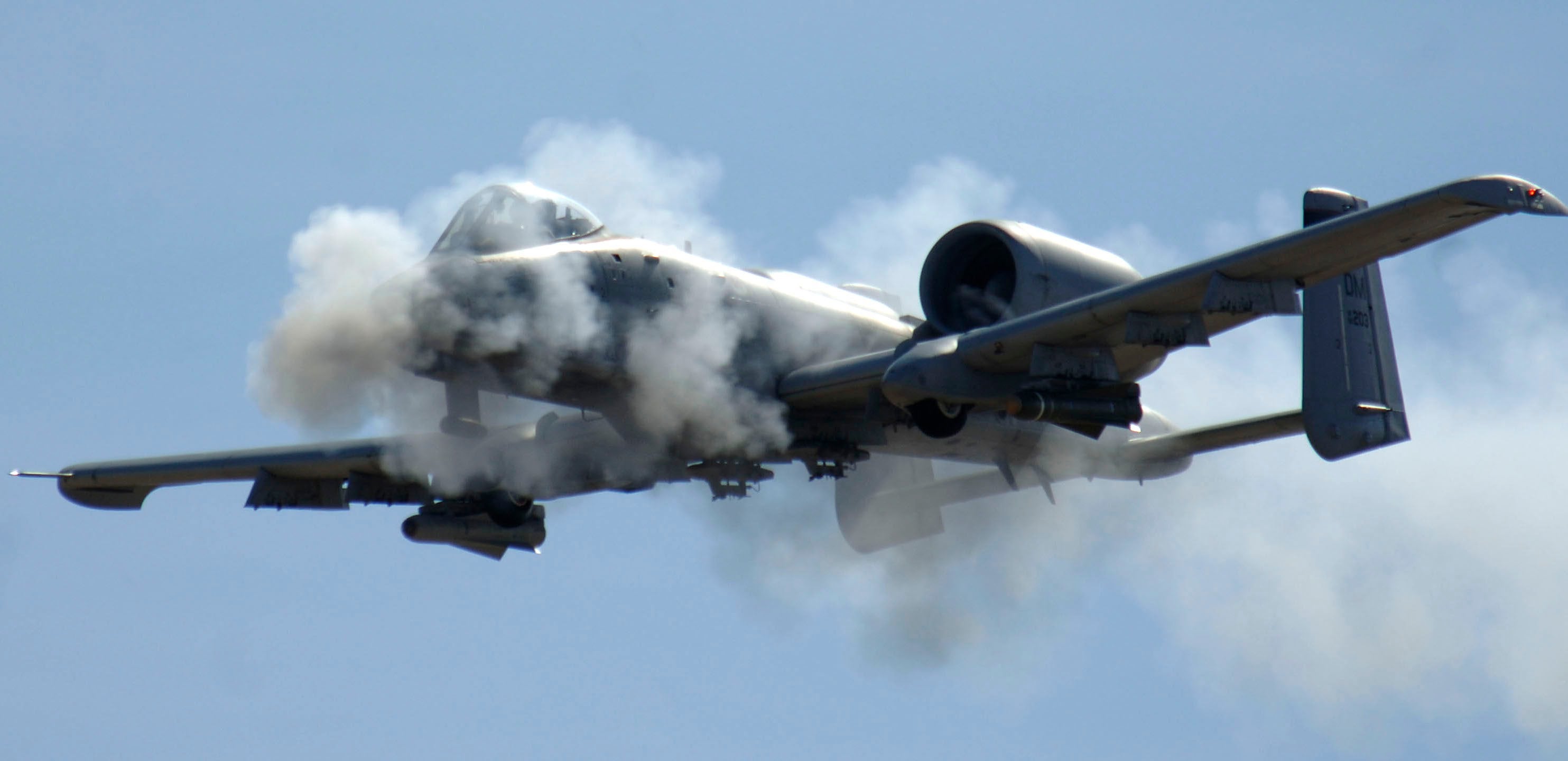
Do you have a moment to speak about the A-10?
 user314
> You can tell a Finn but you can't tell him much
user314
> You can tell a Finn but you can't tell him much
12/13/2019 at 16:20 |
|
Which the Air Scouts have been trying to retire since, what? ‘91?
 ttyymmnn
> You can tell a Finn but you can't tell him much
ttyymmnn
> You can tell a Finn but you can't tell him much
12/13/2019 at 16:24 |
|
Herp a derp. See, I knew I was forgetting something. Any others?
 user314
> ttyymmnn
user314
> ttyymmnn
12/13/2019 at 16:41 |
|
A-1 and A-7, which were both Navy aircraft first. There was the A-37 Dragonfly used in ‘Nam, and the COIN version of the Super Tucano that they’re acquiring as the A-29 .
 ttyymmnn
> user314
ttyymmnn
> user314
12/13/2019 at 17:09 |
|
Also remembered the A-12. Had forgotten about the A-37 too. And I tend to think of the A-7 only as a Navy bird.
 user314
> ttyymmnn
user314
> ttyymmnn
12/13/2019 at 19:04 |
|
A-12 doesn't really count though, does it? The A stood for "Archangel", not Attack, and it was flown by the CIA.
 ttyymmnn
> user314
ttyymmnn
> user314
12/13/2019 at 20:38 |
|
You’re right, it doesn’t. The A-12 was unarmed.
 You can tell a Finn but you can't tell him much
> ttyymmnn
You can tell a Finn but you can't tell him much
> ttyymmnn
12/13/2019 at 21:42 |
|
According to Wikipedia currently there is the A-10 and the AC-130 variants, and that’s it for USAF attack aircraft spotting the A designator.